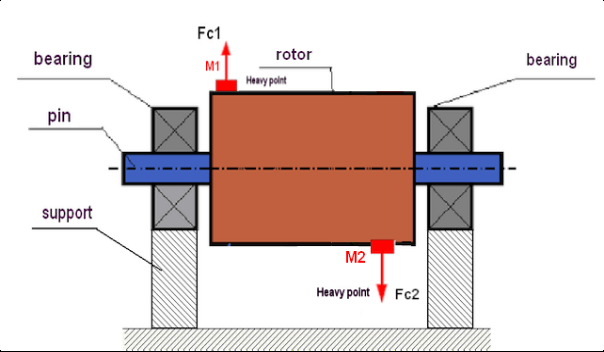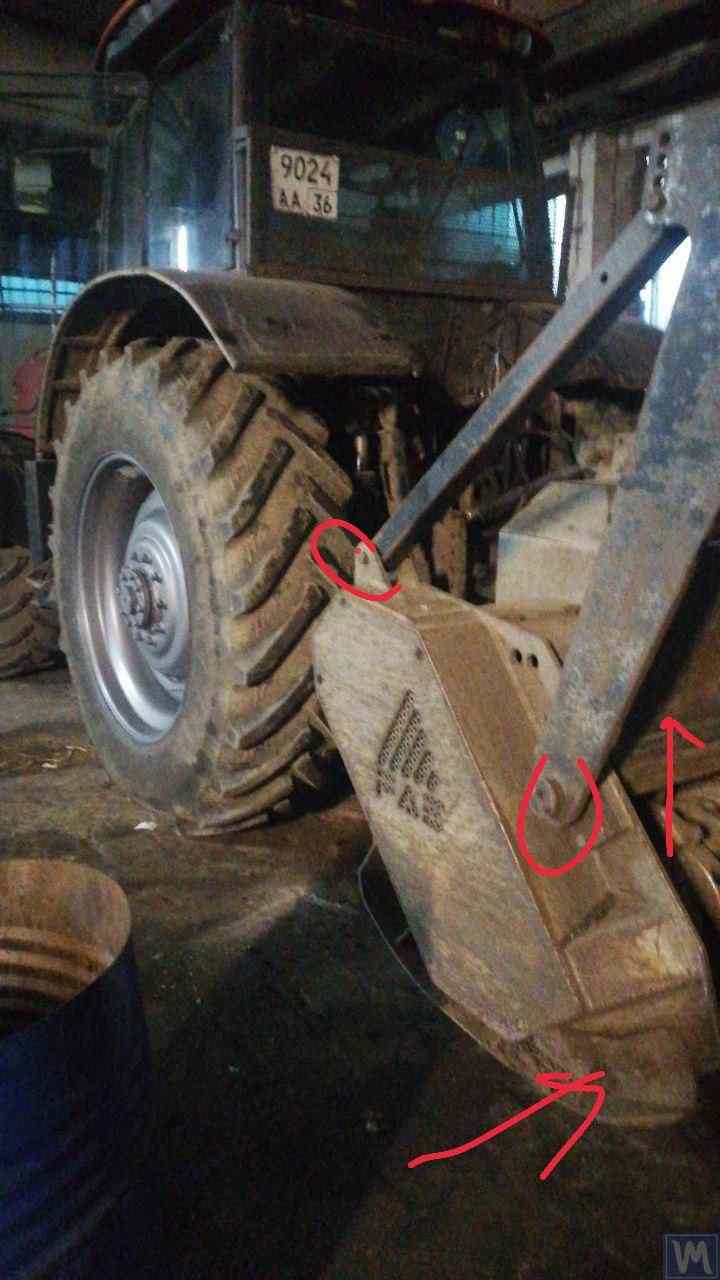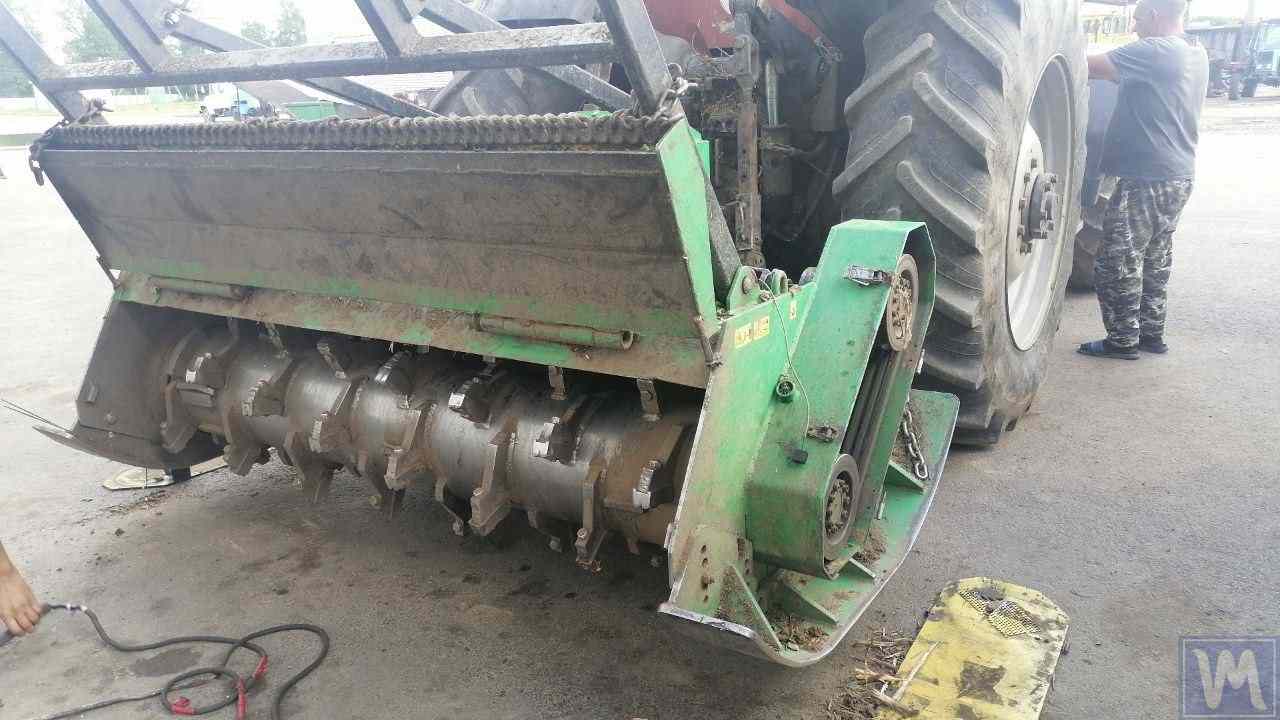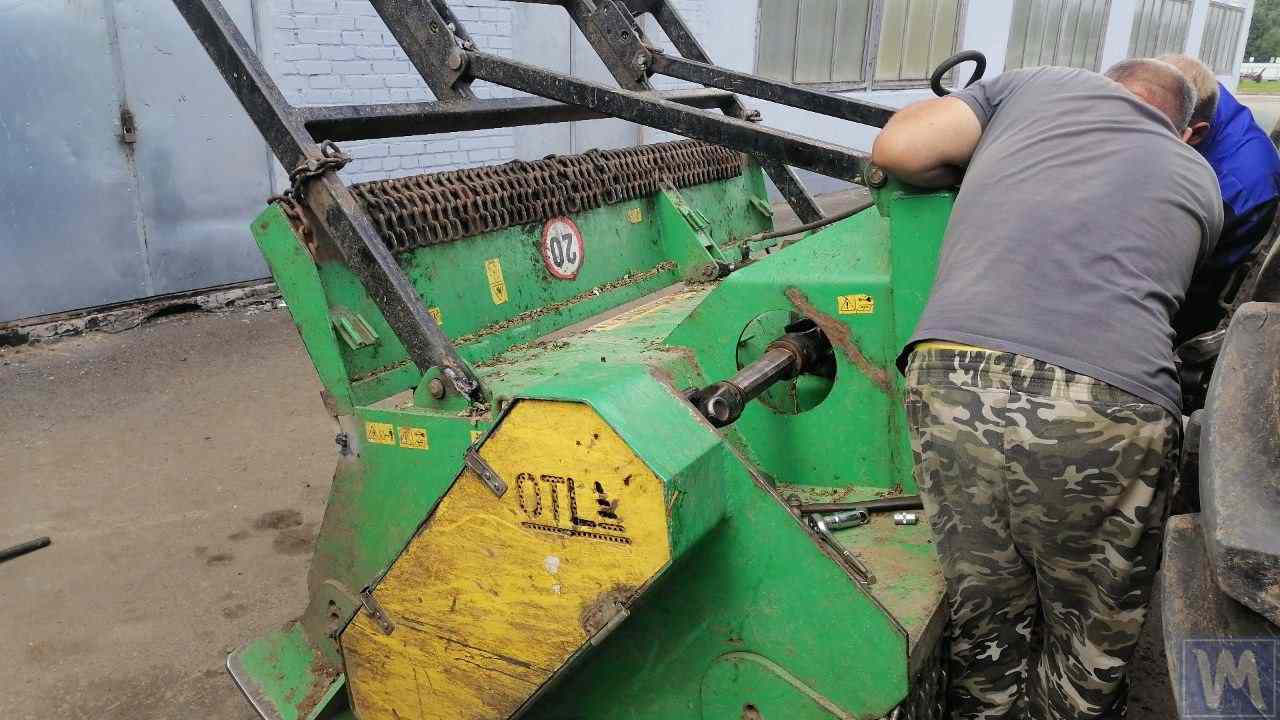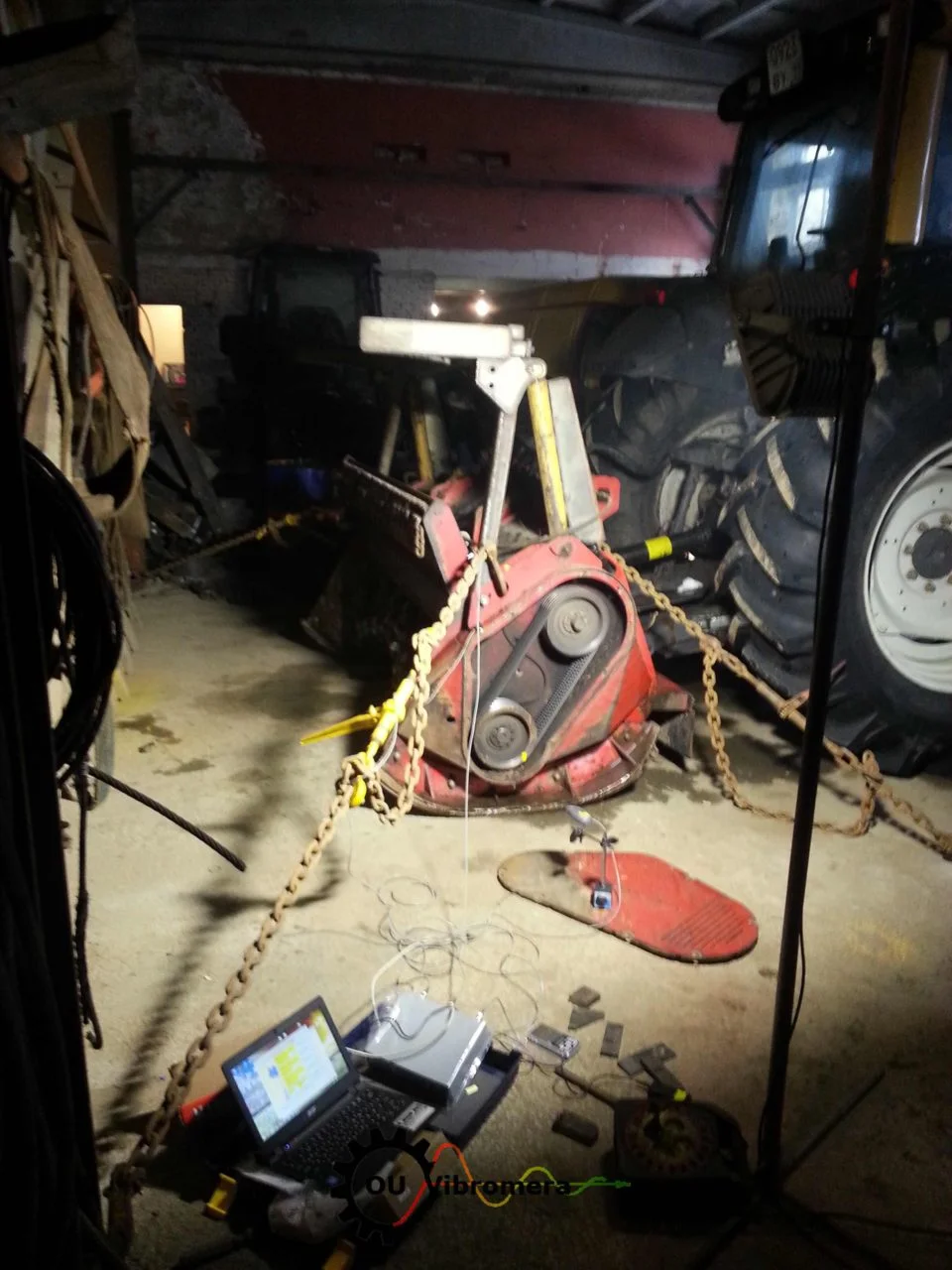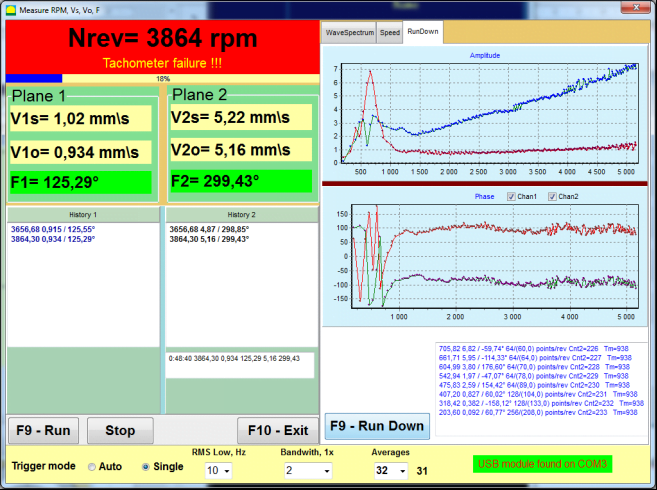During the balancing process, a one and a half kilogram test weight flew off at 1800 rpm. The load broke off with such force that its fragments not only broke through the door and windows of the car behind, but also damaged the wall of the building in front of the mulcher. Fortunately, no one was injured, but the situation was extremely threatening.
The welder had assured us before the incident that the welded joint was secure and even offered to stand in front of the mulcher as proof of his words. Fortunately, we took no chances.
Since then, I've always insisted that it's better to do a little extra work with a bolt cutter or use a heavier sledgehammer than to attach a load unreliably.
You're right: after installing a test weight, the vibration or phase should change by at least 20%, ideally 30%.
Before balancing, I recommend checking the following:
Bearing play: before balancing, remove the belts and wiggle the rotor with a crowbar. This can save a lot of time.
Weld the front curtain and the pusher frame on the mulcher to the mulcher body during balancing. They should not be loose.
Inspect the mulcher housing for cracks. If any cracks are found, have them machined and welded.
Note that the green mulcher has a welded front plate and horns.
It's better to do it right away than to balance randomly later.

